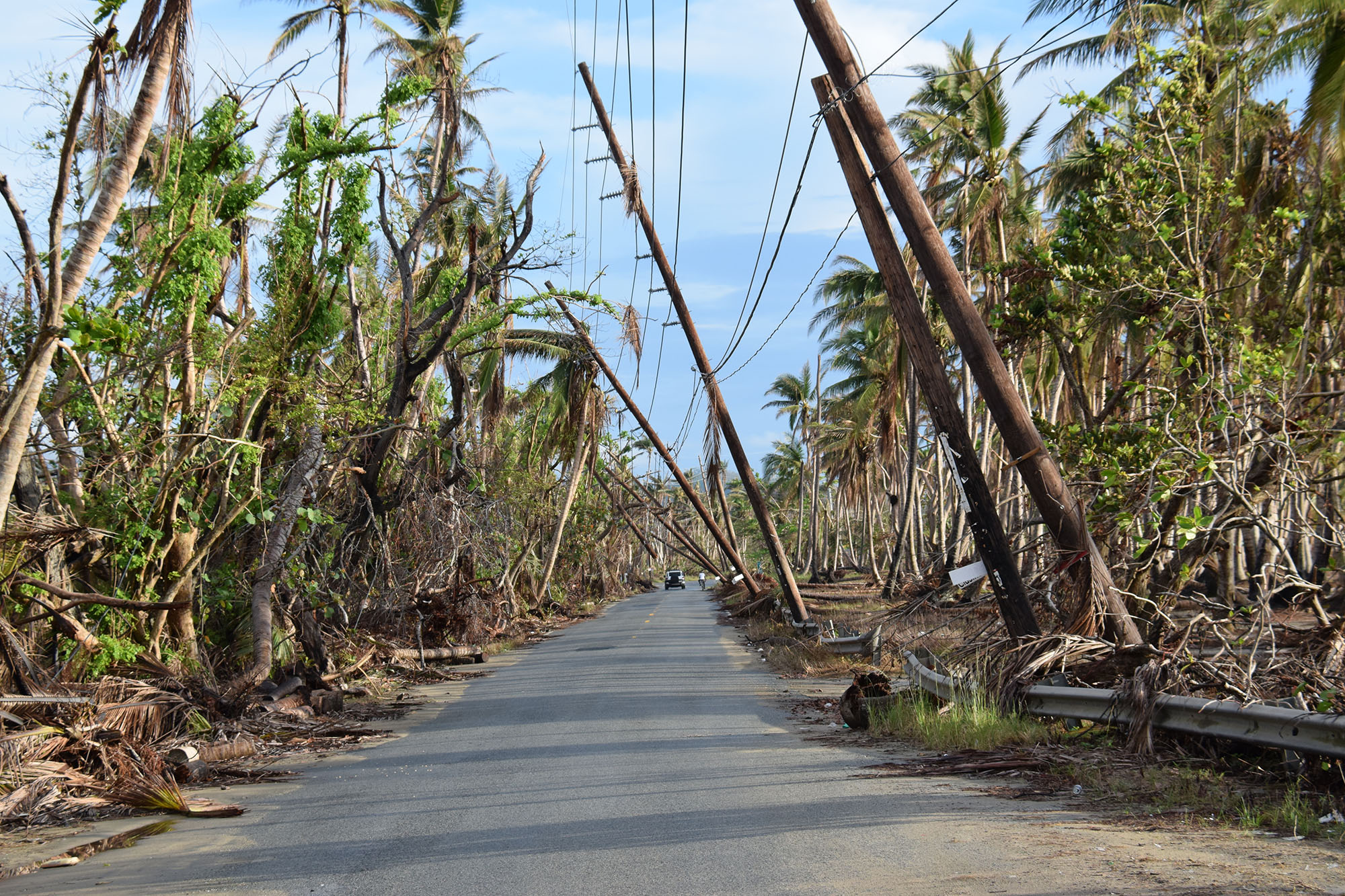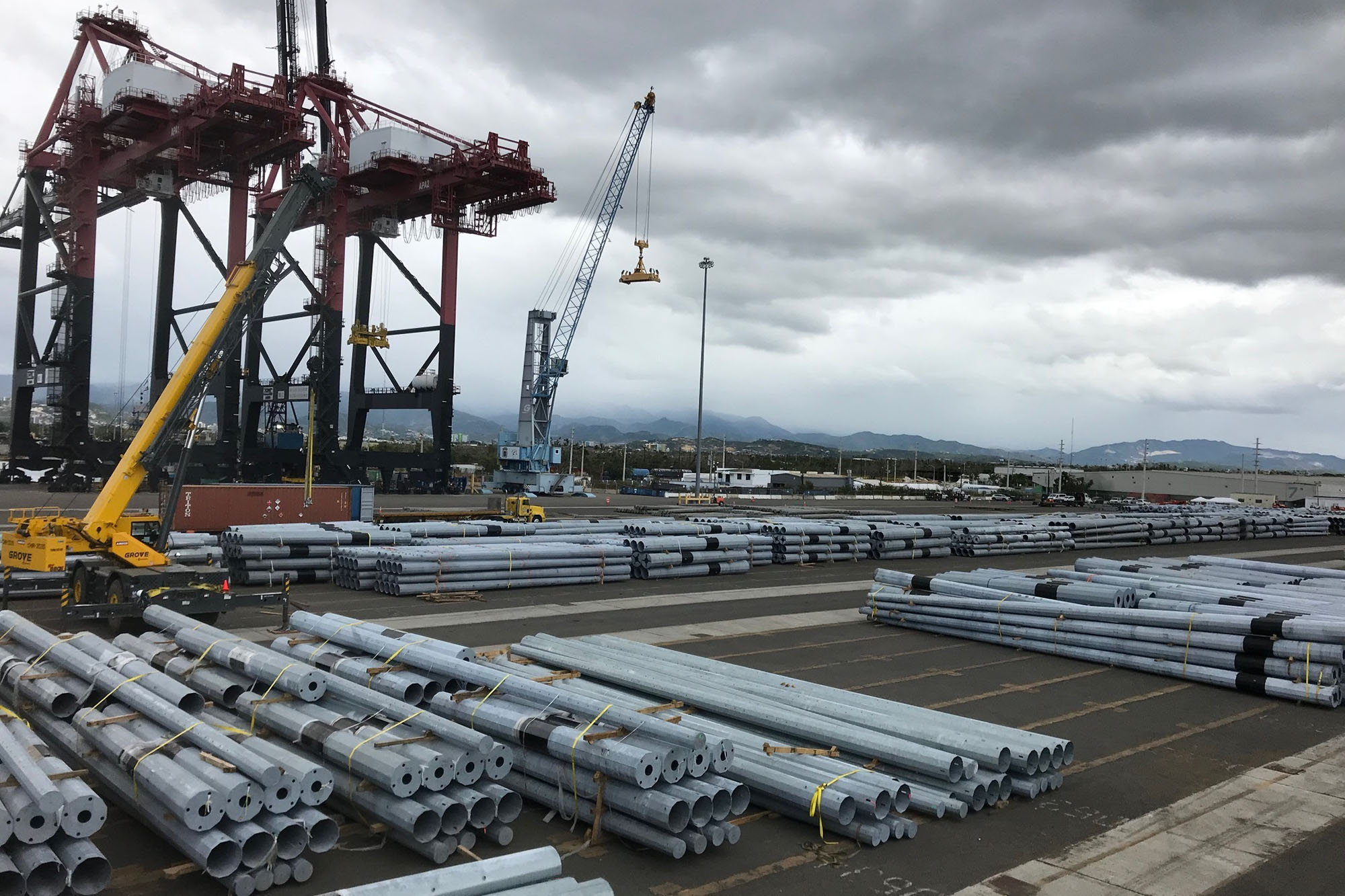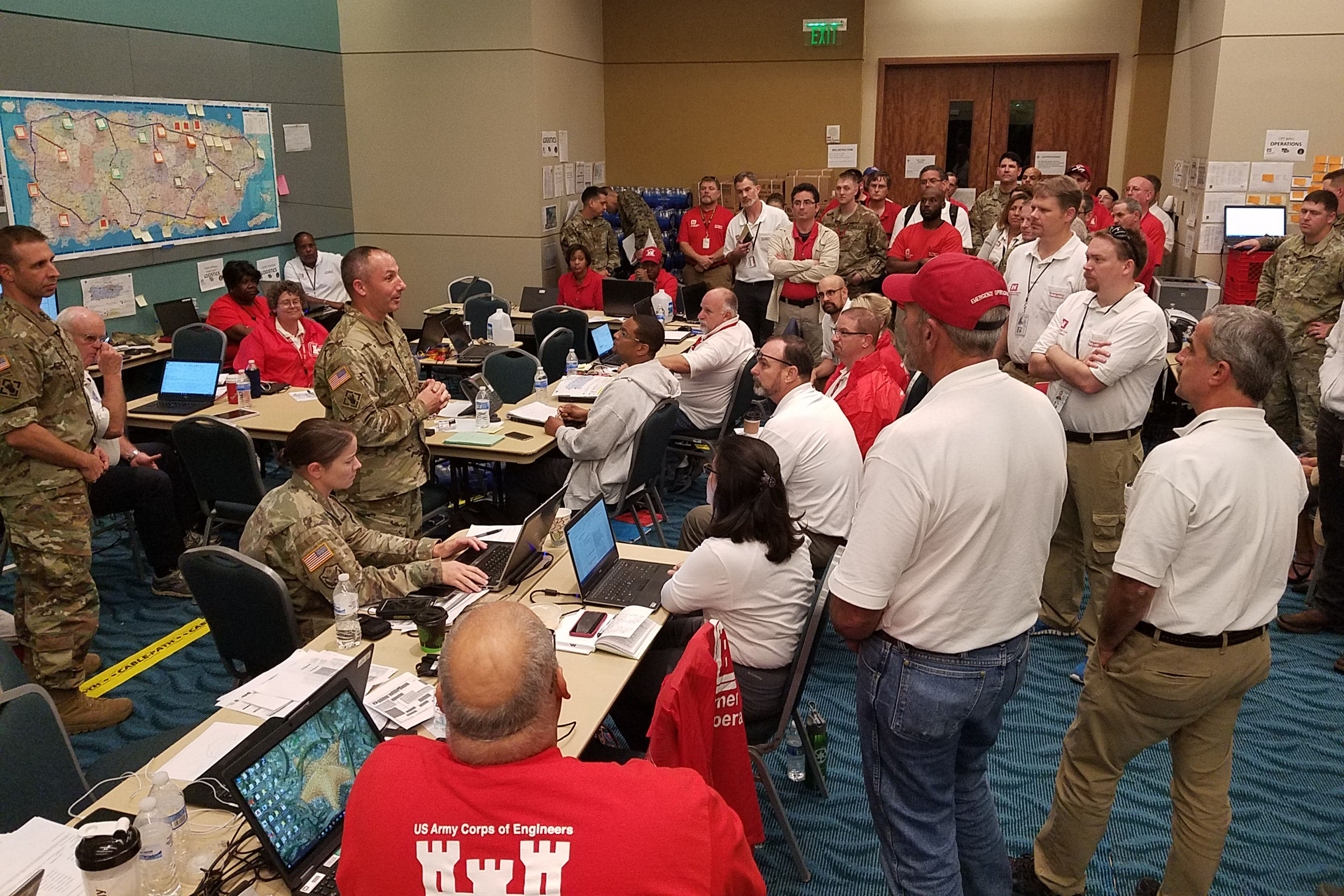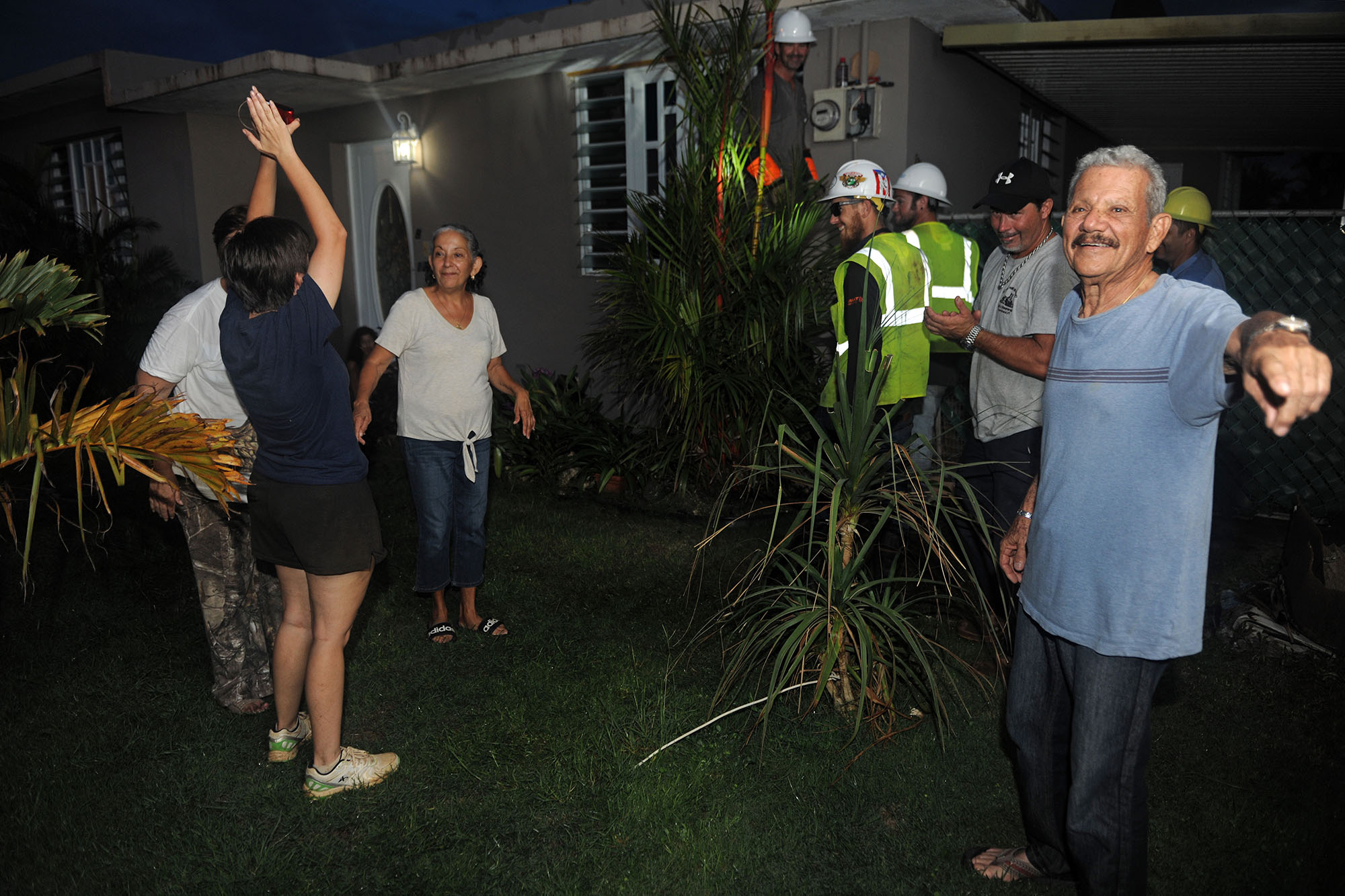On September 20, 2017, Hurricane Maria tore across Puerto Rico, causing catastrophic wind damage, widespread flooding from torrential rainfall, lasting power outages, and a humanitarian disaster on the island. A month prior, in August 2017, Hurricane Harvey’s record-shattering rainfall had flooded the coast of southeast Texas. Hurricane Irma impacted the U.S. Virgin Islands only twelve days after Harvey had made landfall. Two weeks later, Hurricane Maria, the second Category 5 hurricane and the deadliest storm of the 2017 Atlantic hurricane season, crossed over Puerto Rico. Overall, 2017 was the costliest year of weather-related disasters on record, with a total of $306.2 billion in damages, almost $100 billion greater than the damages wrought during 2005—the year of Hurricanes Katrina and Rita and previously the most destructive. By the end of 2017, the Federal Emergency Management Agency (FEMA) had registered more than 4.7 million survivors for individual assistance—more registrations than for Hurricanes Rita, Wilma, Katrina, and Sandy combined.
In its role as “FEMA’s Engineer,” the U.S. Army Corps of Engineers (USACE) responded to the disasters of 2017—removing debris and restoring navigable waterways in Texas, repairing critical infrastructure and providing temporary roofing in Florida and the U.S. Virgin Islands, and uniquely, restoring electrical service in Puerto Rico.
Getting the lights back on
In Puerto Rico the storm damage to the power grid was so pervasive that almost the entire island was left in the dark. The blackout would be the longest in U.S history, with the last remaining households reconnected to the power grid in mid-August 2018. In the immediate aftermath of the storm, it was impossible for many residents of rural areas to get to the remaining open medical facilities because of damage to mountain roads. Because of this disruption to basic services and infrastructure, thousands of Americans died over the next few months. Maria exposed years of neglected maintenance of the power grid and highlighted the vulnerability of many people who were living with very little. The hurricane caused untold suffering in Puerto Rico, but the response to the storm revealed the resourcefulness and resilience of Puerto Ricans and showcased the dedication of thousands of federal responders, power industry workers, and concerned individuals. The lights came back on all over Puerto Rico, community by community, month by month.
In 2017-2018, more than three thousand USACE personnel volunteered to assist their fellow Americans in need in the Caribbean. They became part of a larger Unified Command supporting the Commonwealth of Puerto Rico, led by the Puerto Rico Electric Power Authority (PREPA), FEMA, and representatives of the U.S. electric power industry. Working with its partners, the Corps’ efforts to restore power in Puerto Rico included the logistical feat of procuring more than 51 million replacement parts for the Unified Command—including 61,000 power poles and 8,400 miles of conductor wire, much of which had to be manufactured specifically for this purpose and shipped to a Caribbean island more than 1,000 miles southeast of Florida. The Corps’ mission included the installation of generators for temporary power at more than 1,200 critical facilities —four times more than in the aftermath of any previous storm. It also featured the Corps’ first use of microgrids, which helped to turn the lights back on for 15,000 businesses and households in nine isolated communities. Corps personnel ensured that remote sites across the island were reconnected, often relying on helicopter support to reach those areas. At the height of the mission in January 2018, the Corps was coordinating the work of more than four thousand contractors daily. FEMA allocated $1.8 billion towards the Corps’ work on grid repair alone. Restoring the power in Puerto Rico required a combination of planning, logistical, engineering, contracting, and project management capabilities unique to the Corps of Engineers.
 |
 |
|
Damaged power lines along a road in Humacao, Puerto Rico, one of the island’s hardest hit municipalities, Oct. 28, 2017. (USACE photo by Michael Izard-Carroll).
|
Newly manufactured poles at the Task Force Power Restoration laydown yard at the Port of Ponce, Feb. 4, 2018. To repair the Puerto Rican grid, the Corps acquired more than 50 million replacement parts. (USACE photo by Robert DeDeaux).
|
A bridge between the federal and the local
In a crisis that desperately called for reassurances from trusted institutions and proactive planning on the part of those agencies, the Corps stepped forward to assure citizens of its ability to use federal resources wisely and efficiently to restore power effectively and transparently. Corps personnel worked to untangle logistical and organizational challenges, to break down the enormous grid restoration effort into manageable pieces, and to acquire the necessary materials, all while accounting for the resources put into the effort. And the Corps remained to see the mission completed. A year after the devastation of Hurricane Maria, Puerto Rico’s wider recovery was only beginning, but the lights were back on.
USACE continued to build large inland flood-risk-reduction projects and conduct coastal storm-risk management studies in Puerto Rico as part of the island’s longer-term recovery and efforts to improve its resilience in the face of future storms. In 2018, Jacksonville District allocated more than $2.5 billion of recovery funding from the Bipartisan Budget Act to these significant projects and studies.
 |
 |
|
In his third week in Puerto Rico, Col. John Lloyd led an update briefing with Task Force Power at the Puerto Rico Convention Center, San Juan, Oct. 27, 2017. More than three thousand USACE personnel volunteered to assist their fellow Americans in need.
(USACE Pittsburgh District photo by Jeff Hawk, Public Affairs).
|
Neighbors celebrated outside the home of Mara Aleres Gomez in the Maleza Baja neighborhood of Aguadilla as a porch light illuminated, Nov. 14, 2017. Gomez’s home was the last of approximately 320 residences in that area to receive power. Jubilant scenes like this were repeated across the island over the next several months. (USACE photo by Steven Shepard).
|
Learn more
The Office of History, Headquarters USACE, recently published a book that focuses on the role of the Corps in the restoration of electric power in Puerto Rico during the first year after the storm. It highlights some of the challenges the agency faced and how it responded. Compiled primarily from oral history interviews conducted by the Office of History, the book gives voice to some of the USACE personnel who were deeply involved in the response to Maria.
For more on the Corps of Engineers' emergency operations mission, see the Office of History publications Situation Desperate (Origins to 1950) and Destruction Imminent (1950 to 1979).
***
September 2022. No. 154.